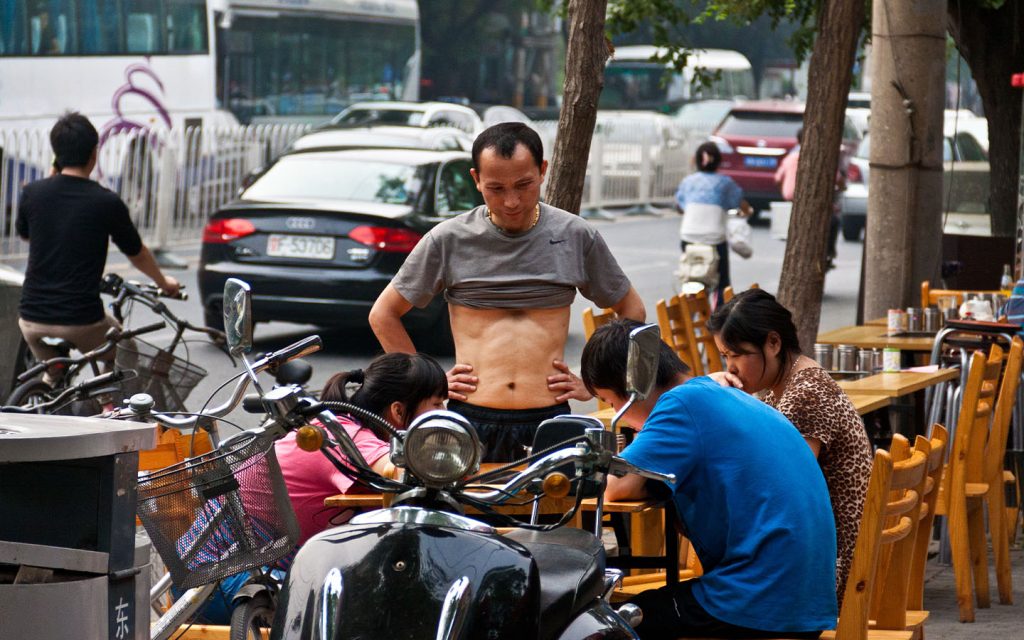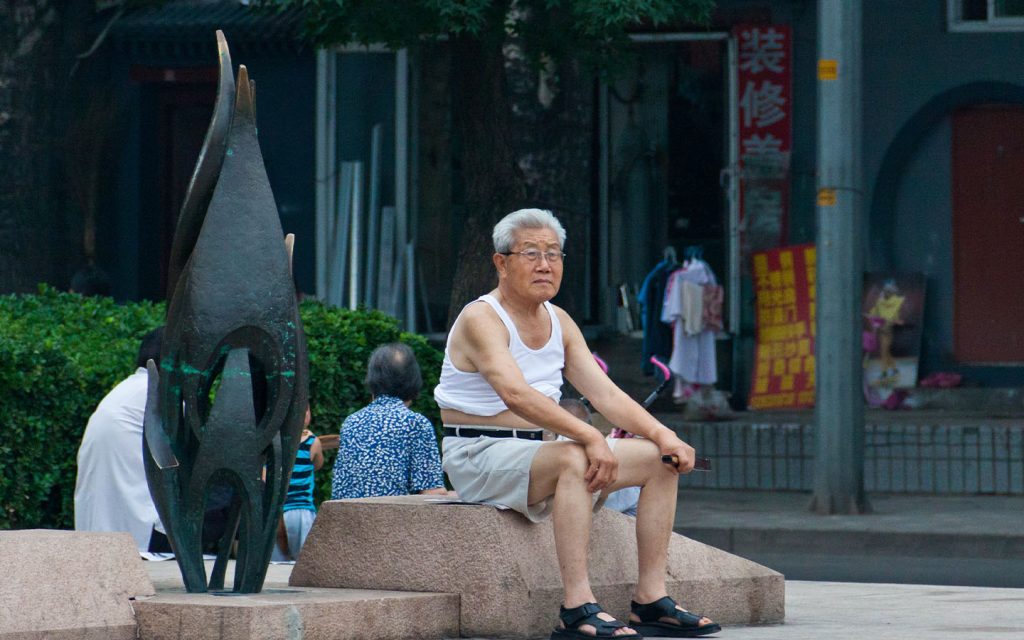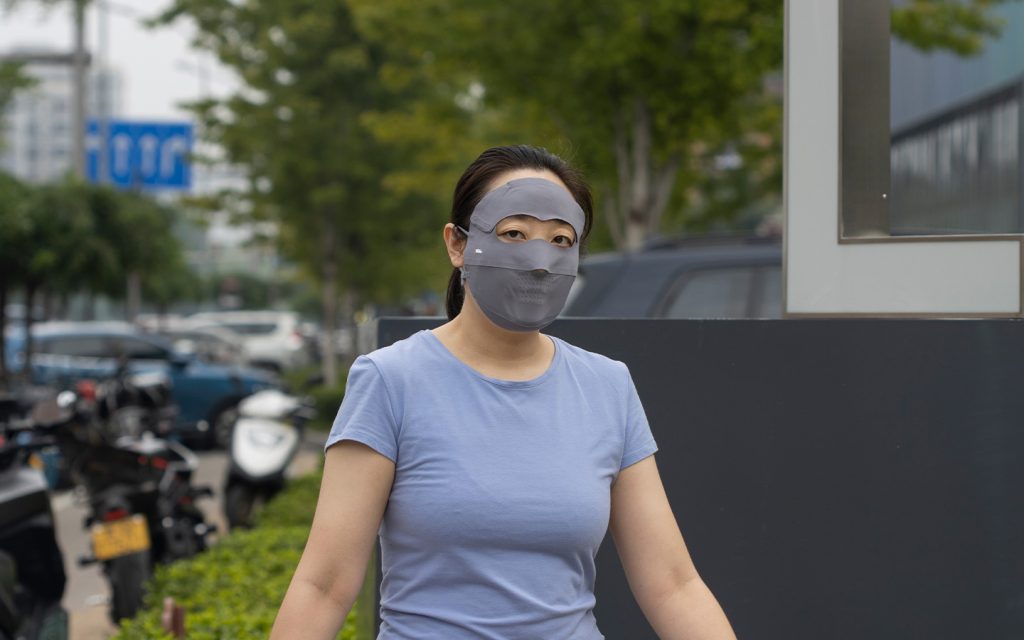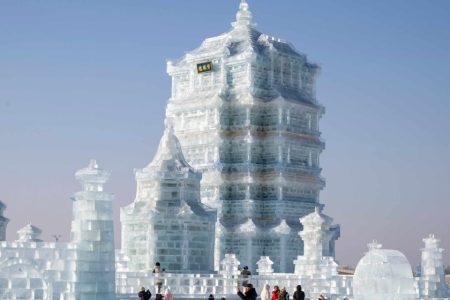When the modern day bikini debuted in Paris in 1946, it was a worldwide sensation for all the wrong reasons. Conservative and religious elements were up in arms over what they perceived to be a salacious and immoral outfit. Meanwhile, the bikini’s creator, Louis Réard, struggled to find a professional model who was willing to introduce the two-piece swimsuit to the public (he was eventually saved by burlesque dancer and world’s first bikini model, Micheline Bernardini).
Despite early bans in countries such as Portugal, Italy and Australia, the garment gradually gained mainstream acceptance in the ensuing decades, thanks to shifting societal attitudes and actresses such as Marilyn Monroe, Ursula Andress and Raquel Welch, who wore it in their films and photoshoots.
[See more: Here are China’s best travel destinations for beating the heat this summer]
More recently, a new type of “bikini” known as the “Beijing Bikini” (北京比基尼) has emerged in China, attracting a similarly high level of scrutiny. The name is a bit of a misnomer, however, as the Beijing Bikini doesn’t refer to an outfit, but rather to the phenomenon in which Chinese men roll up their shirts to expose their bellies and backs in order to fend off the heat. In other words, an improvised midriff top minus the flat, toned stomach that is normally a requisite for wearing one.
Read on to learn more about this unique Chinese practice and why it has been attracting attention for all the wrong reasons.
Who invented the Beijing Bikini?
The exact origin of the term “Beijing Bikini” has been lost in the annals of history, although Chinese state media stated in 2015 that the word and its affiliate “Beijing Belly” were invented by expats living in China.
Regardless of its etymology, the phenomenon of Chinese men pulling up their shirts began attracting widespread foreign media attention during the 2010s.
[See more: What are the best travel destinations in Asia for a summer coolcation?]
In 2010, The Los Angeles Times published a story about the topic, although it only referred to the practice by using the Chinese word for its practitioners, “bang ye” (literally: exposing grandfather, 膀爺). By the time The New York Times ran a story on the issue in 2016, use of the term Beijing Bikini was already in full swing.
Domestic coverage of the Beijing Bikini, however, began much earlier, with the Beijing Youth Daily reportedly trying to get rid of the “little bad habit” in 2002 by shaming “Beijing Bikini uncles” with a photo gallery of them.

Where can I find the Beijing Bikini?
Despite the name, the Beijing Bikini is not confined to the Chinese capital and can be found nationwide in cities such as Shenyang, Tianjin, Handan and Guangzhou. The practice has spread abroad as well, with the New York Times reporting that the bikini has been “proudly displayed by Chinese tourists outside New York art museums, Buckingham Palace in London and the Eiffel Tower in Paris.”
[See more: High temperatures in Macao have been causing at least 10 heatstroke cases a day]
This unique summer look isn’t strictly limited to Chinese men either, as there have been reports of men from other countries such as Vietnam and India engaging in the practice.
Comparisons have also been drawn between the Beijing Bikini and the outfits worn by professional models on the runway.
Why is the Beijing Bikini so polarising?
The Beijing Bikini has attracted controversy for various reasons. For some, the idea of having middle-aged men expose their bellies for everyone to see is unappealing, with one Chinese reader telling China Daily it is an “eyesore.” Meanwhile another interviewee told the media outlet that the practice “is an affront to the rights of others in society [and] to a decent environment.”
[See more: Climate change: Cities are trying innovative techniques to beat the heat]
A double-standard does seem to exist, as illustrated by one UK respondent who said that the prospect of “young, fit men” pulling up their shirts “looks ok.” Others have viewed it from the prism of male and female equality. “The men should be allowed only if women are allowed, too. Equality, people…equality!” one Canadian reader told China Daily.

Does the Beijing Bikini actually keep you cool?
Opinions differ over whether or not the Beijing Bikini can keep an individual cool. Chinese state media certainly thinks the measure is ineffective. In various reports, the CCTV and People’s Daily Online explained that at temperatures of around 35°C or more, the body begins to absorb heat from the outside environment rather than dispersing it through the skin. By exposing one’s midriffs to the open air, CCTV said it would lead to greater absorption of heat, leading to greater discomfort. As well, the media outlet stated that rolling up one’s shirt could also lead to sunburn.
On the flip side, Beijing Bikini appears to be underpinned by traditional Chinese medicine theory and folk remedies that claim that exposure of one’s belly can help to dissipate the warm qi or energy concentrated around this area.
[See more: Many parts of the Chinese mainland are being hit by record May heat]
In 2019, Japan-based Sora News 24, conducted an experiment in which three local writers roadtested the Beijing Bikini on a hot Tokyo day. The participants each agreed that the bikini kept their midriffs cooler, but all of them, including the one with abs, expressed concerns over how they would be perceived. Meanwhile, writer, Yuichiro Wasai, described it as “a half-baked way to preserve decorum” and said that he would rather go all the way by going completely shirtless.
How has the Chinese government reacted to the Beijing Bikini?
The Chinese authorities have long tried to dissuade Chinese men from adopting the Beijing Bikini, with state-affiliated media and local governments making a concerted effort in this department. As early as 2002, the Beijing Youth Daily tried to encourage Chinese men with exposed bellies to cover up by distributing 400 t-shirts over a three month period.
In the lead up to the Beijing Olympics, the Chinese government launched various campaigns that promoted “civilised” behaviour such as queuing, as well as not spitting and not exposing one’s belly.
[See more: As the world heats up, ‘coolcations’ are becoming a thing]
In the years since, various Chinese cities have instituted formal bans against the Beijing Bikini, including Tianjin, Jinan and Shenyang, which slap fines against those who contravene the rule. During the Covid-19 pandemic, the Beijing government also issued a ban on the practice citing hygiene concerns.

Is there an equivalent phenomenon for women?
While nowhere near as controversial as the Beijing Bikini, the facekini (臉基尼) has also made international headlines for its audacious and unconventional look.
Invented by Qingdao native Zhang Shifan in 2004, the balaclava-like mask covers the whole face, leaving openings for just the eyes, nose and mouth. The mask is typically worn by Chinese women on beaches and on hot days as a means to protect oneself against the sun’s rays and other dangers on the beach including jellyfish and crabs.
Much like the Beijing Bikini, the facekini has proven divisive, with some ridiculing the mask for its comical and outlandish design, which has been compared to that of a bandit mask or a halloween costume.
[See more: Paying more for your coffee? Blame climate change for that]
Another similarly controversial fashion trend in mainland China is that of women wearing their pyjamas out on the streets during the day and nightime. Known as “PJ women” (睡衣女), these individuals have also attracted the attention of the authorities, including those from Suzhou, which controversially tried to stamp out the practice using facial recognition technology.
To be fair, Chinese men have also been spotted wearing their pyjamas outside, albeit to a lesser extent.






